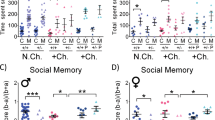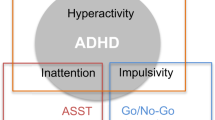Abstract
Pituitary adenylate cyclase-activating polypeptide (PACAP, ADCYAP1: adenylate cyclase-activating polypeptide 1), a neuropeptide with neurotransmission modulating activity, is a promising schizophrenia candidate gene. Here, we provide evidence that genetic variants of the genes encoding PACAP and its receptor, PAC1, are associated with schizophrenia. We studied the effects of the associated polymorphism in the PACAP gene on neurobiological traits related to risk for schizophrenia. This allele of the PACAP gene, which is overrepresented in schizophrenia patients, was associated with reduced hippocampal volume and poorer memory performance. Abnormal behaviors in PACAP knockout mice, including elevated locomotor activity and deficits in prepulse inhibition of the startle response, were reversed by treatment with an atypical antipsychotic, risperidone. These convergent data suggest that alterations in PACAP signaling might contribute to the pathogenesis of schizophrenia.
This is a preview of subscription content, access via your institution
Access options
Subscribe to this journal
Receive 12 print issues and online access
$259.00 per year
only $21.58 per issue
Buy this article
- Purchase on Springer Link
- Instant access to full article PDF
Prices may be subject to local taxes which are calculated during checkout


Similar content being viewed by others
References
Owen MJ, Williams NM, O'Donovan MC . The molecular genetics of schizophrenia: new findings promise new insights. Mol Psychiatry 2004; 9: 14–27.
Preston GA, Weinberger DR . Intermediate phenotypes in schizophrenia: a selective review. Dialog Clin Neurosci 2005; 7: 165–179.
Braff DL, Light GA . The use of neurophysiological endophenotypes to understand the genetic basis of schizophrenia. Dialog Clin Neurosci 2005; 7: 125–135.
Hashimoto H, Shintani N, Baba A . Higher brain functions of PACAP and a homologous Drosophila memory gene amnesiac: insights from knockouts and mutants. Biochem Biophys Res Commun 2002; 297: 427–431.
Vaudry D, Gonzalez BJ, Basille M, Yon L, Fournier A, Vaudry H . Pituitary adenylate cyclase-activating polypeptide and its receptors: from structure to functions. Pharmacol Rev 2000; 52: 269–324.
Arimura A . Perspectives on pituitary adenylate cyclase activating polypeptide (PACAP) in the neuroendocrine, endocrine, and nervous systems. Jpn J Physiol 1998; 48: 301–331.
Hashimoto H, Shintani N, Tanaka K, Mori W, Hirose M, Matsuda T et al. Altered psychomotor behaviors in mice lacking pituitary adenylate cyclase-activating polypeptide (PACAP). Proc Natl Acad Sci USA 2001; 98: 13355–13360.
Tanaka K, Shintani N, Hashimoto H, Kawagishi N, Ago Y, Matsuda T et al. Psychostimulant-induced attenuation of hyperactivity and prepulse inhibition deficits in Adcyap1-deficient mice. J Neurosci 2006; 26: 5091–5097.
Nurnberger Jr JI, Foroud T . Genetics of bipolar affective disorder. Curr Psychiatry Rep 2000; 2: 147–157.
Ishiguro H, Ohtsuki T, Okubo Y, Kurumaji A, Arinami T . Association analysis of the pituitary adenyl cyclase activating peptide gene (PACAP) on chromosome 18p11 with schizophrenia and bipolar disorders. J Neural Transm 2001; 108: 849–854.
Hashimoto R, Suzuki T, Iwata N, Yamanouchi Y, Kitajima T, Kosuga A et al. Association study of the frizzled-3 (FZD3) gene with schizophrenia and mood disorders. J Neural Transm 2005; 112: 303–307.
Hashimoto R, Okada T, Kato T, Kosuga A, Tatsumi M, Kamijima K et al. The breakpoint cluster region gene on chromosome 22q11 is associated with bipolar disorder. Biol Psychiatry 2005; 57: 1097–1102.
Good CD, Johnsrude IS, Ashburner J, Henson RN, Friston KJ, Frackowiak RS . A voxel-based morphometric study of ageing in 465 normal adult human brains. Neuroimage 2001; 14: 21–36.
Ashburner J, Friston KJ . Voxel-based morphometry – the methods. Neuroimage 2000; 11: 805–821.
Pezawas L, Verchinski BA, Mattay VS, Callicott JH, Kolachana BS, Straub RE et al. The brain-derived neurotrophic factor val66met polymorphism and variation in human cortical morphology. J Neurosci 2004; 24: 10099–10102.
Mechelli A, Friston KJ, Frackowiak RS, Price CJ . Structural covariance in the human cortex. J Neurosci 2005; 25: 8303–8310.
Maldjian JA, Laurienti PJ, Kraft RA, Burdette JH . An automated method for neuroanatomic and cytoarchitectonic atlas-based interrogation of fMRI data sets. Neuroimage 2003; 19: 1233–1239.
Sakaue M, Ago Y, Baba A, Matsuda T . The 5-HT1A receptor agonist MKC-242 reverses isolation rearing-induced deficits of prepulse inhibition in mice. Psychopharmacology (Berl) 2003; 170: 73–79.
Chiba S, Hashimoto R, Hattori S, Yohda M, Lipska B, Weinberger DR et al. Effect of antipsychotic drugs on DISC1 and dysbindin expression in mouse frontal cortex and hippocampus. J Neural Transm 2006; 113: 1337–1346.
Matsuyama S, Matsumoto A, Hashimoto H, Shintani N, Baba A . Impaired long-term potentiation in vivo in the dentate gyrus of pituitary adenylate cyclase-activating polypeptide (PACAP) or PACAP type 1 receptor-mutant mice. Neuroreport 2003; 14: 2095–2098.
Sacchetti B, Lorenzini CA, Baldi E, Bucherelli C, Roberto M, Tassoni G et al. Pituitary adenylate cyclase-activating polypeptide hormone (PACAP) at very low dosages improves memory in the rat. Neurobiol Learn Mem 2001; 76: 1–6.
Gainetdinov RR, Mohn AR, Caron MG . Genetic animal models: focus on schizophrenia. Trends Neurosci 2001; 24: 527–533.
Jentsch JD, Roth RH . The neuropsychopharmacology of phencyclidine: from NMDA receptor hypofunction to the dopamine hypothesis of schizophrenia. Neuropsychopharmacology 1999; 20: 201–225.
Otto C, Martin M, Wolfer DP, Lipp HP, Maldonado R, Schutz G . Altered emotional behavior in PACAP-type-I-receptor-deficient mice. Brain Res Mol Brain Res 2001; 92: 78–84.
Nicot A, Otto T, Brabet P, Dicicco-Bloom EM . Altered social behavior in pituitary adenylate cyclase-activating polypeptide type I receptor-deficient mice. J Neurosci 2004; 24: 8786–8795.
Moller HJ . Risperidone: a review. Expert Opin Pharmacother 2005; 6: 803–818.
Acknowledgements
We thank Ms Tomoko Shizuno, Keiko Okada and Akiko Murakami for technical assistance and staff of the National Center of Neurology and Psychiatry for recruiting patients and healthy subjects. This work was supported in part by Grants-in-Aid from the Japanese Ministry of Health, Labor and Welfare (H18-kokoro-005, H17-kokoro-001, H17-kokoro-007 and H16-kokoro-002); the Japanese Ministry of Education, Culture, Sports, Science and Technology; Japan Society for the Promotion of Science; CREST (Core Research for Evolutional Science and Technology) of JST (Japan Science and Technology Agency); Japan Foundation for Neuroscience and Mental Health; the Sankyo Foundation of Life Science; and Taisho Pharmaceutical Co Ltd.
Author information
Authors and Affiliations
Corresponding author
Additional information
Supplementary Information accompanies the paper on the Molecular Psychiatry website (http://www.nature.com/mp)
Rights and permissions
About this article
Cite this article
Hashimoto, R., Hashimoto, H., Shintani, N. et al. Pituitary adenylate cyclase-activating polypeptide is associated with schizophrenia. Mol Psychiatry 12, 1026–1032 (2007). https://doi.org/10.1038/sj.mp.4001982
Received:
Revised:
Accepted:
Published:
Issue Date:
DOI: https://doi.org/10.1038/sj.mp.4001982
Keywords
This article is cited by
-
Role of cryptic rearrangements of human chromosomes in the aetiology of schizophrenia
Journal of Genetics (2023)
-
Neural innervation as a potential trigger of morphological color change and sexual dimorphism in cichlid fish
Scientific Reports (2020)
-
Commonality in dysregulated expression of gene sets in cortical brains of individuals with autism, schizophrenia, and bipolar disorder
Translational Psychiatry (2019)
-
Discovery of PACAP and its receptors in the brain
The Journal of Headache and Pain (2018)
-
Pituitary Adenylate Cyclase-Activating Peptide in the Bed Nucleus of the Stria Terminalis Mediates Stress-Induced Reinstatement of Cocaine Seeking in Rats
Neuropsychopharmacology (2018)



